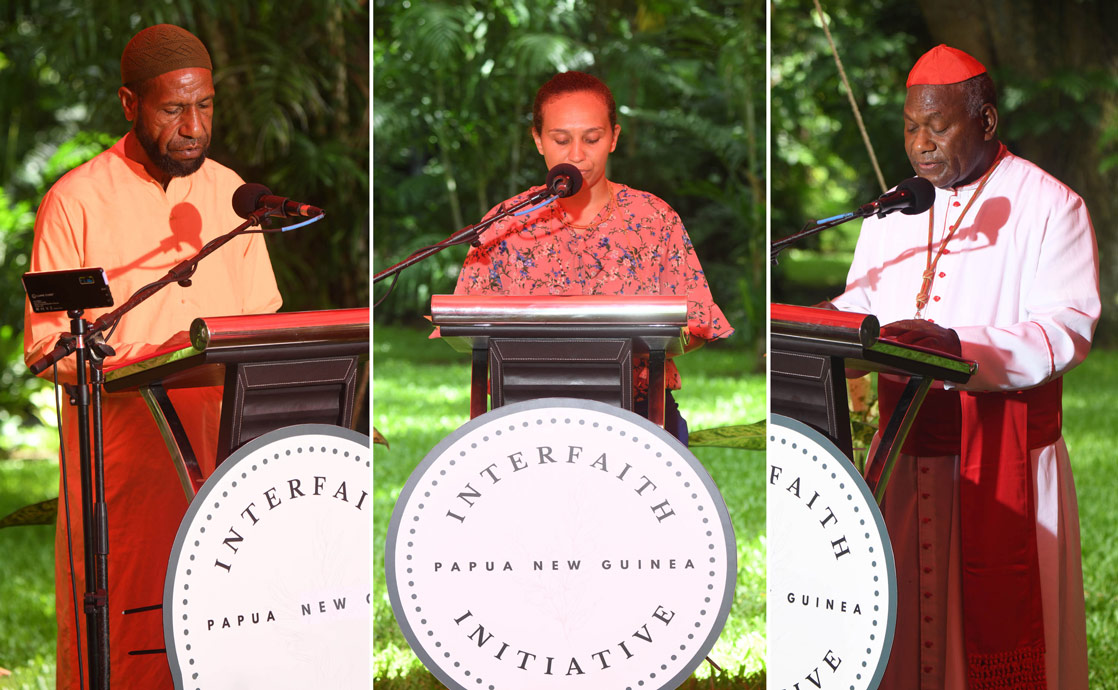In the tapestry of human beliefs and cultures, the Bahá’í teachings resonate with a profound call for unity, particularly underscored in the metaphor of the “Tent of Unity.” This imagery invokes a sense of shelter, inclusivity, and harmony, principles vital to the Bahá’í faith. In Papua New Guinea (PNG), a nation characterized by a rich diversity of languages, customs, and spiritual traditions, this representation takes on a particularly poignant significance. The gathering of individuals under this conceptual tent transcends mere coexistence; it embraces the essence of interfaith dialogue, fostering friendships that bridge divides and nurture collective advancement.
The Bahá’í faith, founded on the principles of oneness and equality, serves as a compass in navigating the intricate landscape of PNG’s multifaceted social structure. The vision of the Tent of Unity suggests that, despite varying beliefs and practices, all paths lead toward a shared destination of peace, understanding, and mutual respect. It posits that unity does not necessitate uniformity; rather, it celebrates diversity while reinforcing commonalities. This undercurrent of interfaith camaraderie offers an incredible opportunity for individuals and communities in PNG to foster relationships that transcend historical sectarian divides.
At the crux of this gathering is the idea of inclusivity. The Bahá’í teachings advocate for a communal space where divergent thoughts can flourish without the specter of intolerance. PNG, with its myriad of indigenous religions and spiritual beliefs, offers fertile ground for the exploration of such a space. The Tent of Unity becomes a metaphorical safe haven, allowing adherents from different faiths to engage in constructive dialogue and mutual learning. This exchange not only enriches individual understanding but also contributes to a collective wisdom that encompasses the spiritual heritage of all participants.
Furthermore, the concept of the Tent of Unity embodies the proactive approach of the Bahá’í community in PNG toward social issues. By fostering interfaith friendships, members seek to address shared challenges within society, such as poverty, education, and health, through collaborative efforts. This initiative exemplifies every effort to transcend dogmatic boundaries and work together for the greater good. The act of coming together under this figurative tent becomes a rallying point for various faith groups, allowing them to pool resources and knowledge in a concerted endeavor to uplift communities.
It is vital to note the transformative potential of embracing the Tent of Unity metaphorically. The Bahá’í teachings emphasize the importance of unity in diversity. In PNG, where tribal affiliations and local customs often dictate social dynamics, this approach can lead to a reimagining of relationships among various groups. When faith communities convene under this symbolic structure, they engage in the pursuit of collective identity, one that recognizes and celebrates their respective heritages while promoting a unified front. The interactions that emerge can pave the way for diplomatic relations and peaceful coexistence in an environment fraught with tribal tensions.
To further elaborate on this idea, we must also contemplate how shared experiences within the Tent of Unity can cultivate empathy. Engaging diverse groups in conversations about faith, culture, and social issues creates a visceral human connection. The raw narratives shared among participants depict the struggles, triumphs, and aspirations of individuals, fostering layers of understanding that exceed conventional dialogue. This deep sense of empathy not only humanizes theological discourse but also cultivates a societal ethos readily capable of supporting camaraderie over conflict.
Moreover, the framework of the Tent of Unity encourages adolescent participation, recognizing the youth as vital agents of change. In PNG, where young individuals encounter unique challenges amid rapid globalization, the space provided by interfaith gatherings instills a sense of hope and purpose. The teachings of the Bahá’í faith urge the youth to harness their inherent potential, fostering leadership qualities that advocate for unity and innovation. Initiatives can be organized that engage this demographic in creative projects reflecting their aspirations, realities, and cultural narratives, thus embedding their voices within the larger conversation.
In practical terms, the concept of the Tent of Unity manifests in various interfaith events throughout Papua New Guinea. These gatherings may take the form of conferences, community service activities, or artistic expressions where diverse religious backgrounds come together. Each act reinforces the commitment to a shared vision that respects individuality while pursuing common goals. Such endeavors serve as living embodiments of the foundational Bahá’í teachings, highlighting the importance of collaboration, equality, and the quest for peace.
Ultimately, the metaphor of gathering under the Tent of Unity within the context of PNG’s interfaith friendships serves to illuminate a path forward. It is a clarion call for embracing diversity as an asset rather than viewing it through the lens of division. The Bahá’í teachings encourage a paradigm shift—one where varied faiths and cultures do not simply coexist but thrive together in mutual respect and understanding. This vision of unity, while ambitious, is profoundly accessible. Through the cooperative efforts of those committed to the principles inherent in the Tent of Unity, PNG can emerge as a beacon of hope, illuminating the cornerstone of interfaith dialogues for generations to come.
